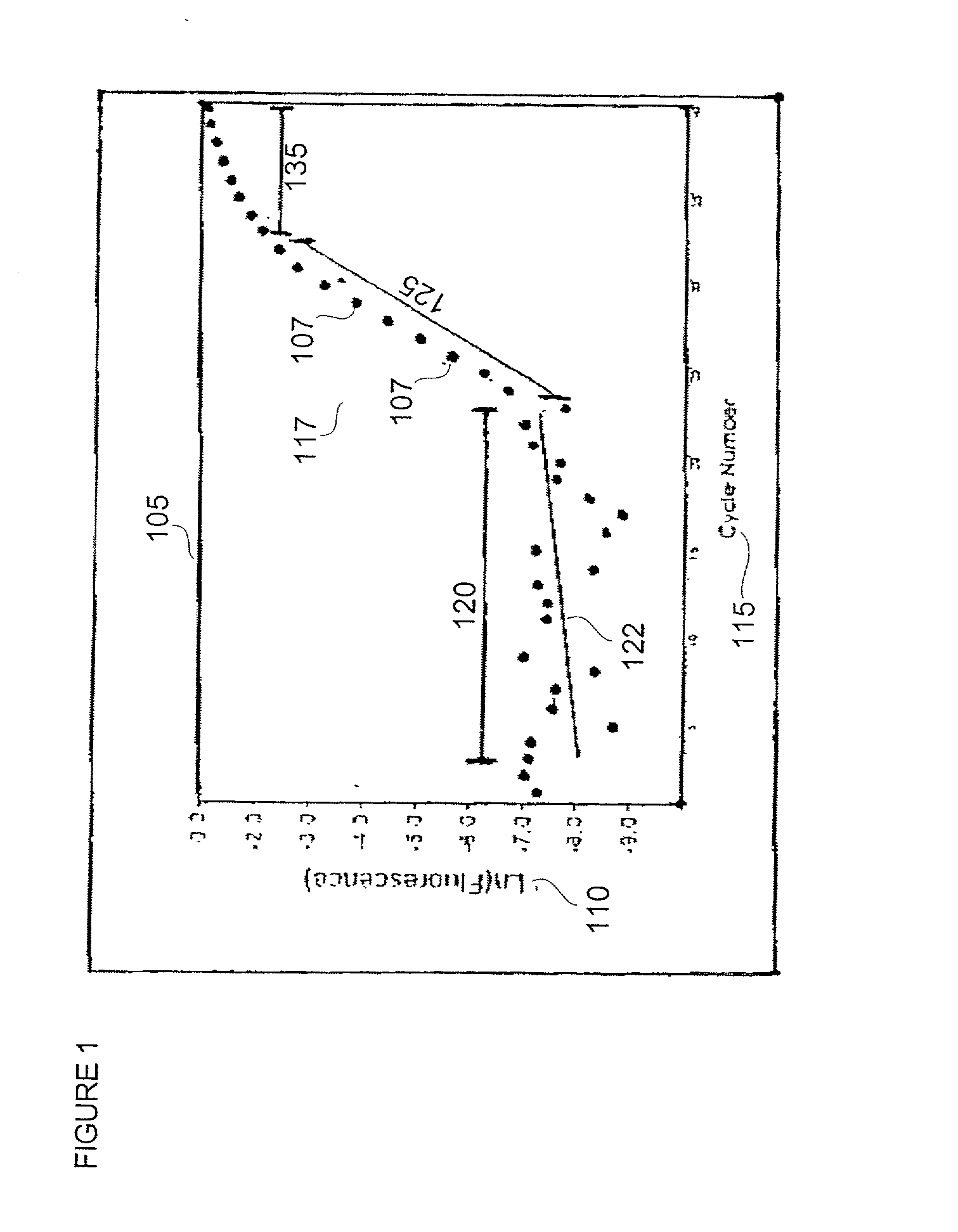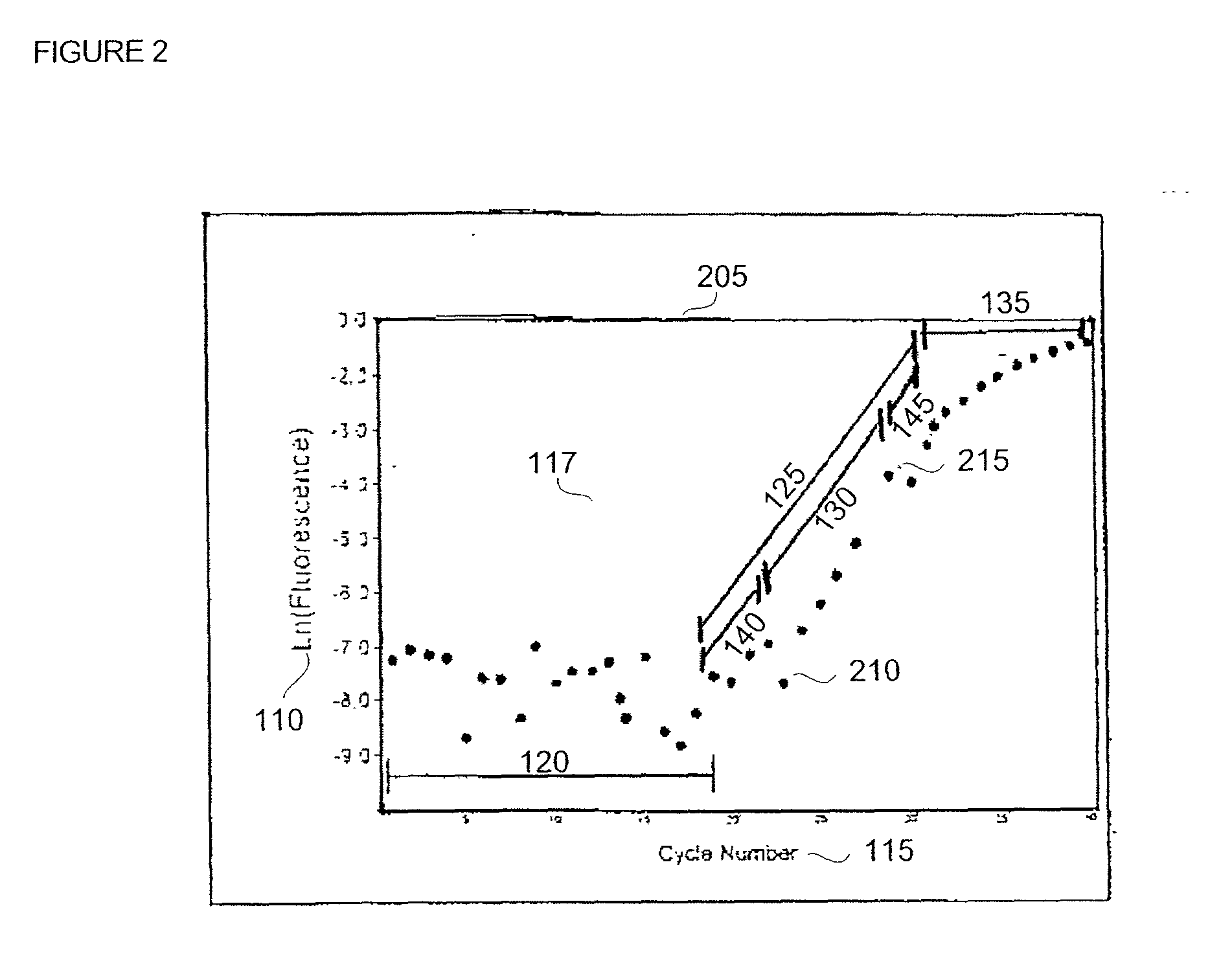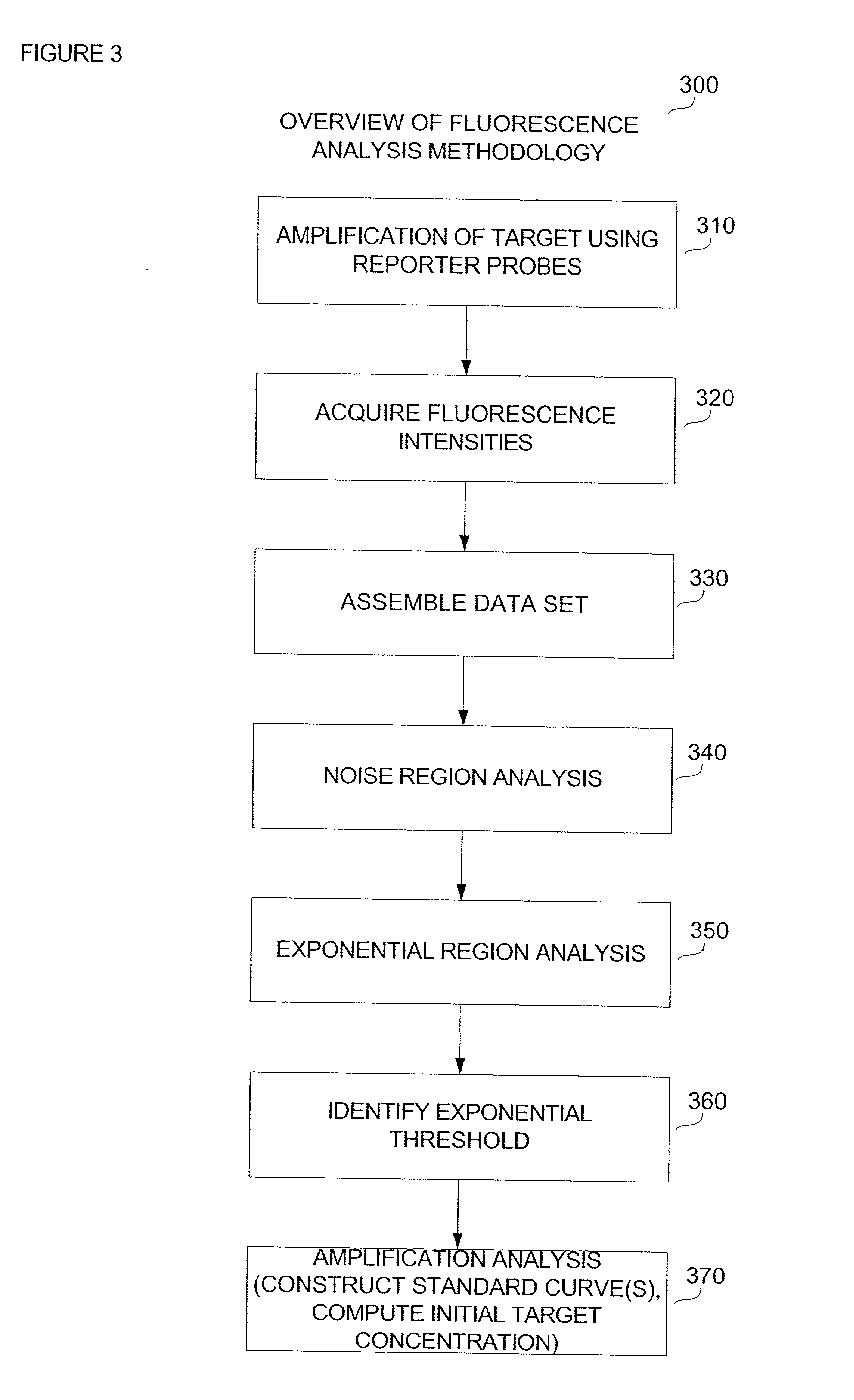Automatic threshold setting for quantitative polymerase chain reaction
a technology of polymerase chain reaction and automatic threshold setting, which is applied in the recognition of signal patterns, biochemistry apparatus and processes, instruments, etc., can solve the problems of affecting the accuracy of quantitation, methods may suffer from diminished accuracy and reproducibility,
- Summary
- Abstract
- Description
- Claims
- Application Information
AI Technical Summary
Problems solved by technology
Method used
Image
Examples
Embodiment Construction
[0027] Reference will now be made to the drawings wherein like numerals refer to like elements throughout.
[0028] In general, amplification of a target template DNA strand by polymerase chain reaction (PCR) proceeds through a series of temperature regulated cycles using the activity of a thermostable enzyme and a sequence specific primer set. At an appropriate temperature, the primers hybridize to portions of the target DNA strand and the enzyme successively adds a plurality of nucleotide bases to elongate the primer which results in the production of progeny (daughter) strands. Each progeny strand possesses a complementary composition relative to the target template strand from which it was derived, and can serve as a template in subsequent reaction cycles.
[0029] When applying quantitative methods to PCR-based technologies a fluorescent probe or other detectable reporter construct is incorporated into the reaction to provide a means for determining the progress of the template ampli...
PUM
| Property | Measurement | Unit |
|---|---|---|
| concentration | aaaaa | aaaaa |
| length | aaaaa | aaaaa |
| exponential threshold | aaaaa | aaaaa |
Abstract
Description
Claims
Application Information
 Login to View More
Login to View More - R&D
- Intellectual Property
- Life Sciences
- Materials
- Tech Scout
- Unparalleled Data Quality
- Higher Quality Content
- 60% Fewer Hallucinations
Browse by: Latest US Patents, China's latest patents, Technical Efficacy Thesaurus, Application Domain, Technology Topic, Popular Technical Reports.
© 2025 PatSnap. All rights reserved.Legal|Privacy policy|Modern Slavery Act Transparency Statement|Sitemap|About US| Contact US: help@patsnap.com



